Public Transportation in Barcelona
Everything You Need to Know


Barcelona is a large city that is always full of tourists. However, getting around is quite easy. This city has many transportation options such as trains, buses, and trams. For shorter trips, you can rent bikes and scooters. For more convenience, you can easily get a taxi. There's an option for every type of traveler. Also, you can get a transport card to get discounts if you plan to use public transportation a lot.
Metro System
Barcelona's metro is the most popular way to get around the city. It’s operated by TMB (Transports Metropolitans de Barcelona) and is a simple, efficient, and affordable mode of transport.

12 lines cover extensive parts of the city, see the map of the train system in Barcelona below.
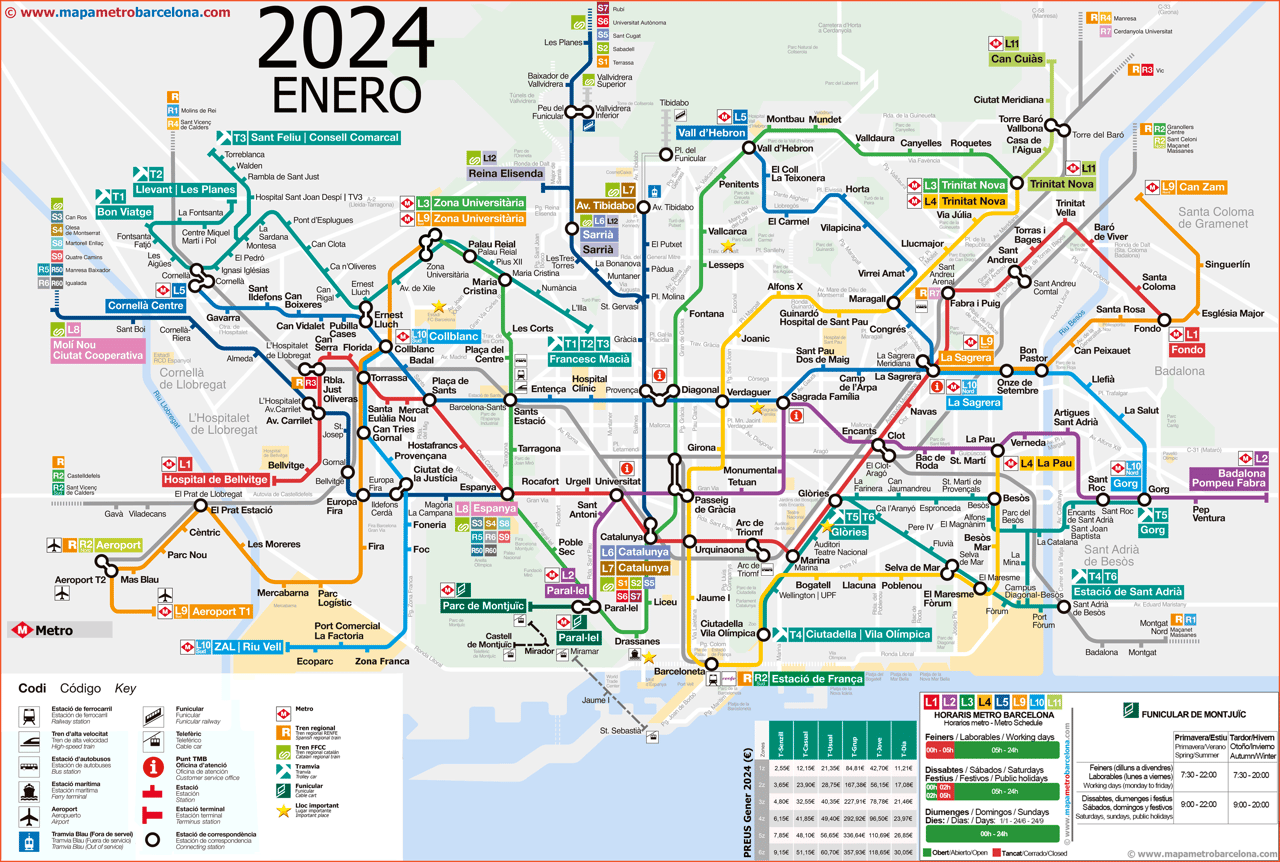
Source: mapametrobarcelona.com
How Much are the Train Tickets?
A single ticket for a train costs €2.40, and a 10-journey T-Casual card is €11.35.
Are Trains in Barcelona Accessible?
Most stations are accessible, with ongoing improvements for the remaining ones.
Operating Hours of Barcelona Train System
The system operates from Monday to Sunday, 5 a.m. to midnight.
Note: You can purchase tickets from machines available in multiple languages and pass through the turnstiles to board. For route planning, the Barcelona metro system’s online route planner is a useful tool.
Bus
Barcelona's buses are a convenient way to get around the city, managed by TMB. There are over 230 lines, including 20 night buses known as Nitbus. Using a printed map for these routes can be confusing due to the network's size. It's often easier to ask your hotel for guidance or visit a tourist information center.
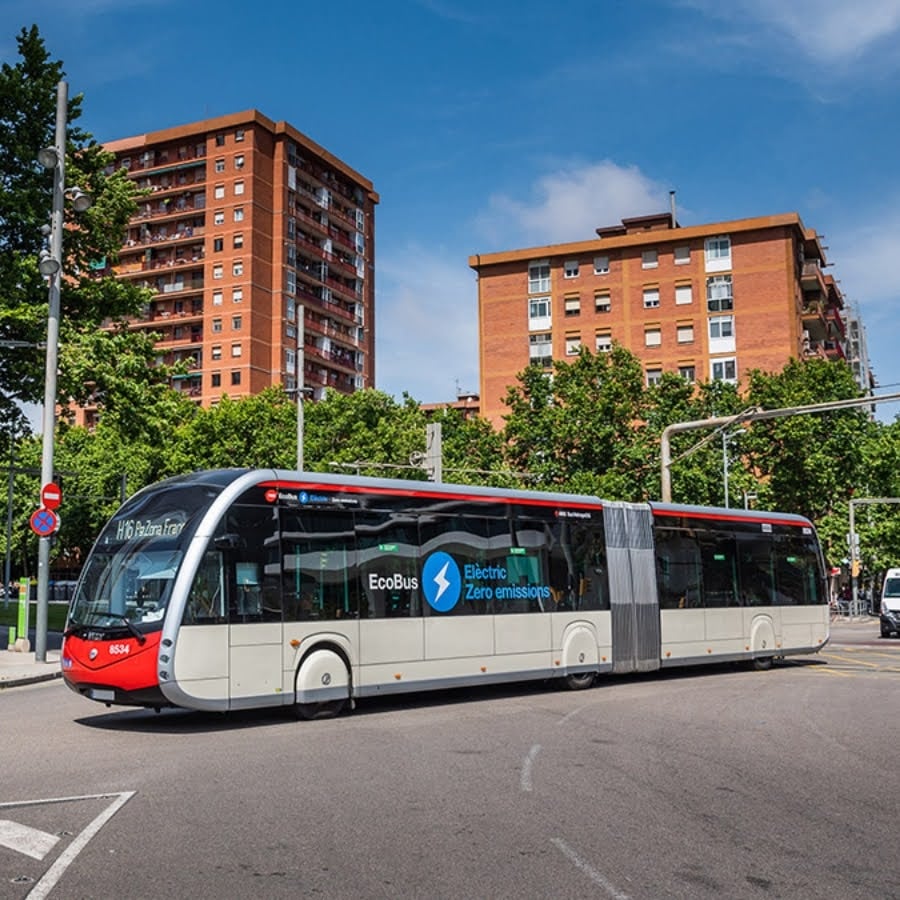
How Much Does a Bus Cost?
Single tickets for buses cost €2.55, but tourists might find better value in the T-Casual card.
Operating Hours of Buses
Bus services generally run from 5:00 a.m. to 10:00 p.m., with Nitbus operating from 10:00 p.m. to 5:00 a.m. Note that Nitbus tickets are not valid on regular buses and vice versa. For real-time schedules and routes, the TMB website and app are very useful.
Note: Maps and timetables are also available at bus stops and tourist information centers. When boarding a bus, it's important to validate your ticket immediately. Night buses, or Nitbus, are especially useful for late-night travel, with many routes stopping at Plaça Catalunya where you can transfer to other lines.
Visit the website of TMB for more information.
Tram System
Barcelona’s tram network is an excellent option for getting around, especially when visiting peaceful areas outside the city center.
The city has two tram networkswith six lines and nearly 30 kilometers of track. While you may not see trams in the heart of the city, they are perfect for exploring its outskirts.
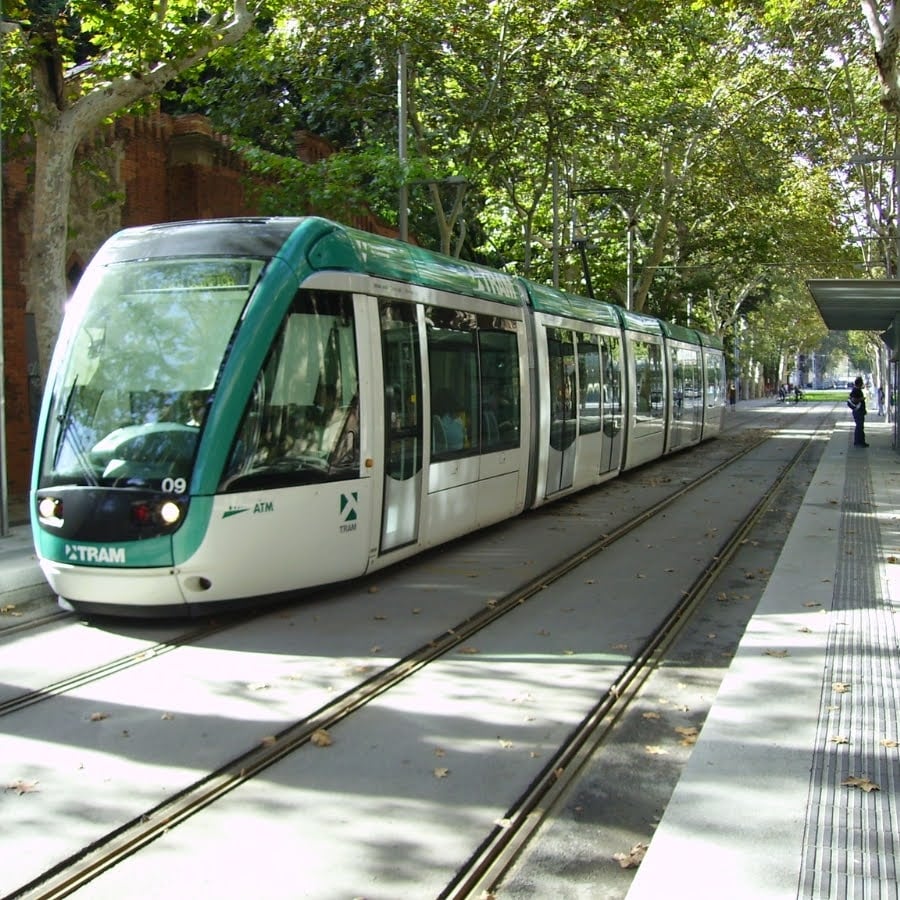

How Much are Tram Tickets?
Tram tickets cost €2.20 and can be purchased from ticket machines at every stop. The same tickets are valid for buses and the metro. It’s easy to switch between different modes of transportation in Barcelona.
Note: For detailed routes and schedules, visit the official TRAM website or use the TMB app.
Commuter Trains
Barcelona’s commuter train network, known as Rodalies, is an excellent option for traveling to the suburbs and nearby towns. The network includes several lines operated by Renfe, connecting various parts of Catalonia. Rodalies trains are especially useful for day trips outside the city.
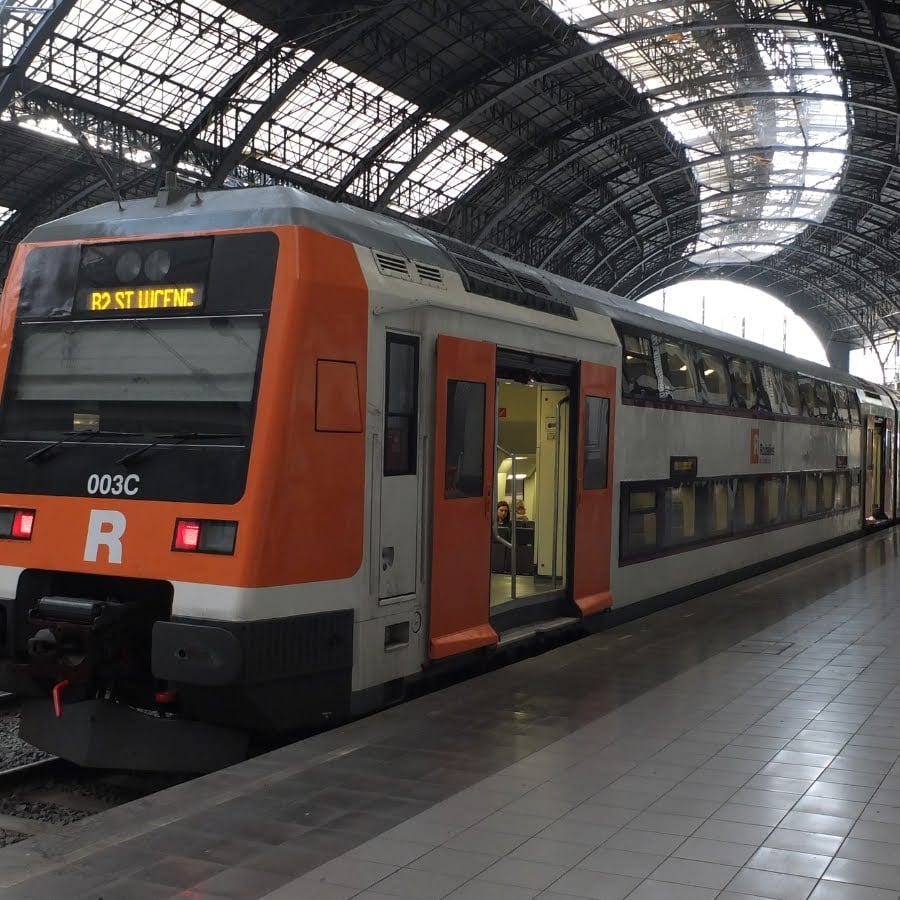
Stations are marked with a white "R" on an orange background. Tickets can be purchased at the stations, and prices vary based on the destination. The integration with Barcelona's metro and bus systems allows for easy transfers using the same ticket or a compatible fare system.
Note: For schedules and routes, visit the Rodalies website or use the Renfe app.
Funiculars and Cable Cars
Barcelona's funiculars and cable cars are also unique and beautiful ways to explore the city’s elevated areas. The city has three funiculars: Montjuic, Tibidabo, and Vallvidrera. These funiculars provide quick and easy access to popular tourist spots, such as the Montjuic Park and Tibidabo Amusement Park.
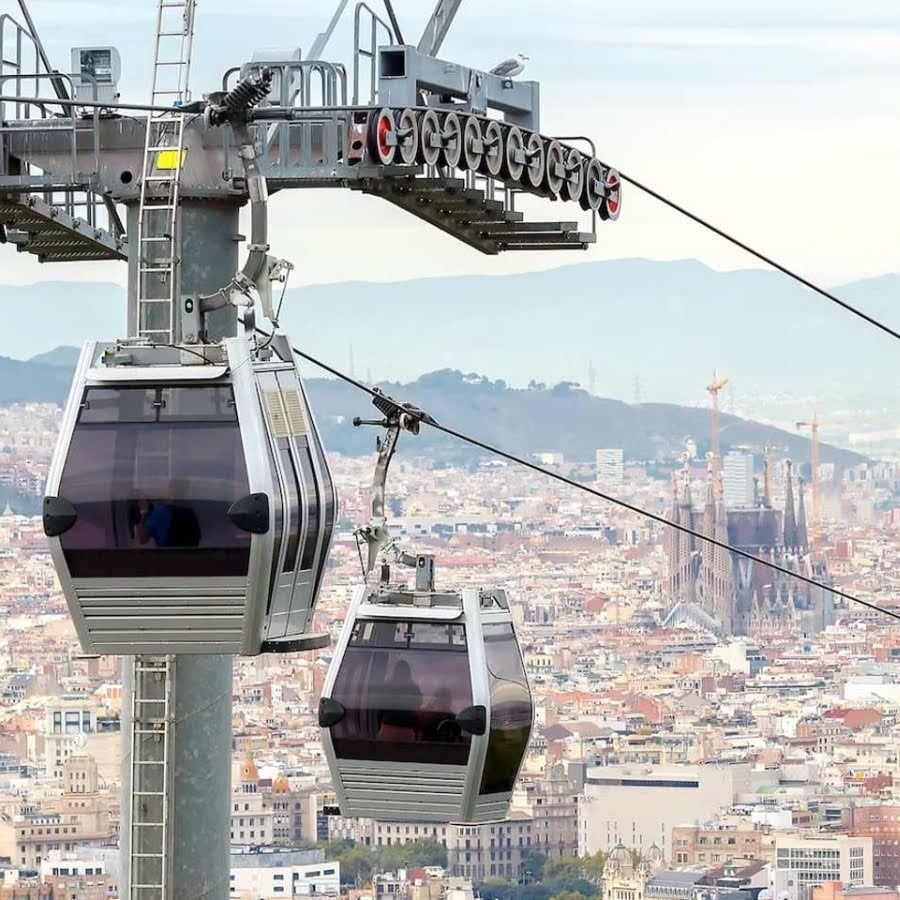
These modes of transport are integrated into Barcelona’s public transport system, so it's easy to transfer with the same tickets used for buses and metro.
Note: For more information on routes, schedules, and ticket prices, visit the official websites or use the TMB app.
Bicing: Bike Sharing
Bicing is Barcelona’s popular bike-sharing program. It’s an eco-friendly and healthy way to move around the city. With over 6,000 mechanical bikes and 800 electric bikes available, Bicing is a way more convenient option for short trips. The service is available to residents over 16 years old and can be easily managed through a smartphone app.
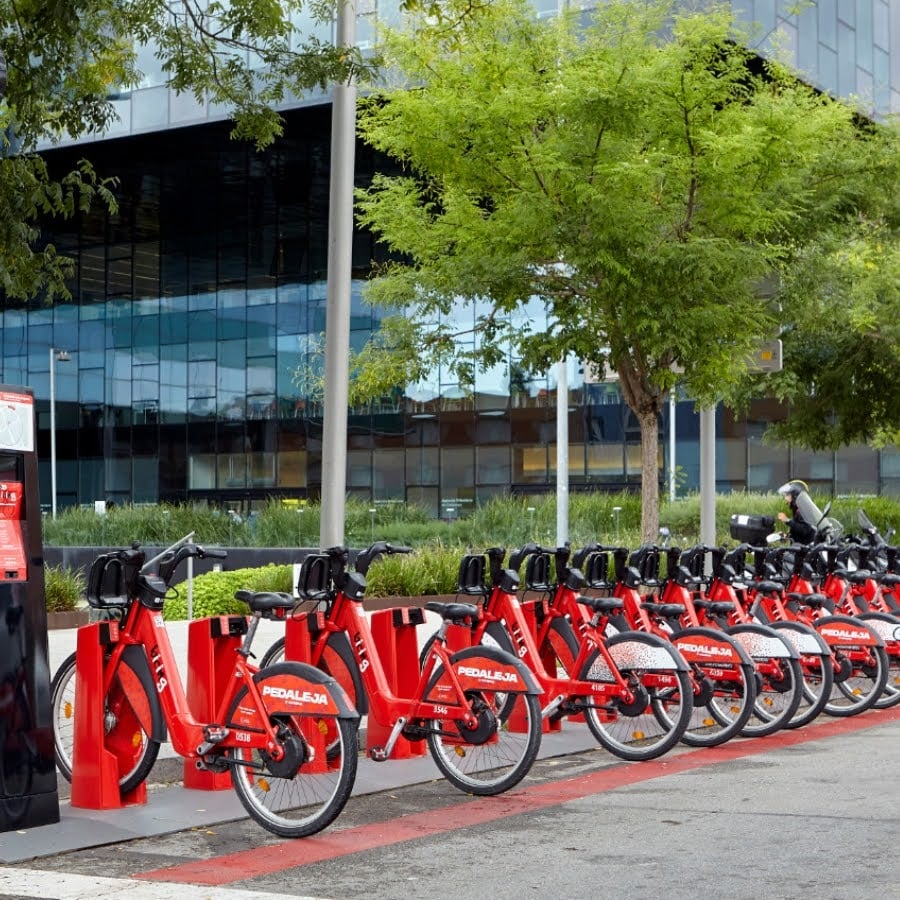
Bikes can be rented from and returned to any of the numerous docking stations located throughout the city. Since they are often near metro stations and bus stops, it’s quite easy to integrate biking with other modes of public transport.
How Much Does a Bike Cost?
An annual pass for a Bicing in Barcelona costs €47.16 and gives you 30 minutes of free hire per ride. You can dock the bike after 29 minutes and take out another for an additional 30 free minutes. If you go over the limit, it costs around €1.50 per hour, and €4.50 after two hours.
Note: For more information on membership and usage, visit the official Bicing website.
Taxi Services
Barcelona’s taxi services are a convenient and reliable way to get around the city. Official taxis are easily recognizable by their black and yellow color. You can find taxis at designated ranks around the city or hail one on the street.
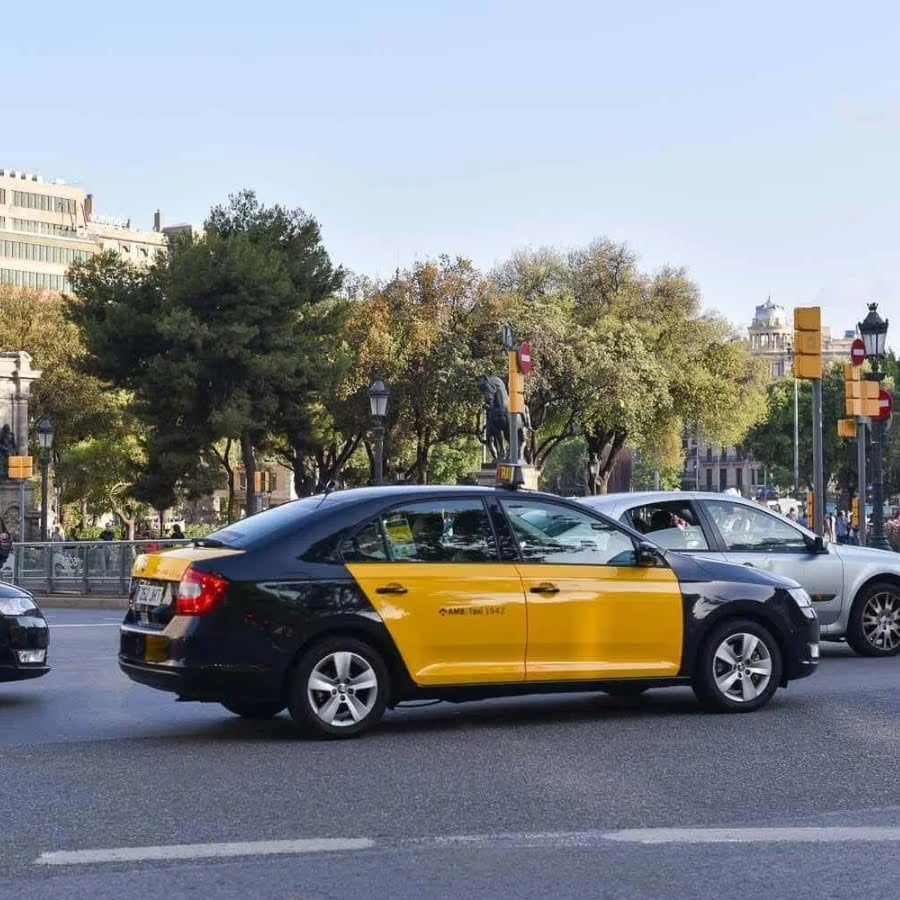
For added convenience, you can also call a taxi at +34 933 033 033. There are also ride-sharing services like Uber and Cabify operating in Barcelona. Taxis are a great choice for direct and quick transportation, especially when carrying luggage or traveling late at night.
Transport Cards in Barcelona
Barcelona's public transportation is well-interlinked, so the transport cards work for all transportation options.
You can purchase various transport cards and tickers in Barcelona. Which one you choose depends on your preferences, but travelers' favorite is usually T-Casual.
| Ticket Type | Cost (€) | Details |
|---|---|---|
| Single Ticket | €2.55 | Valid for a single journey on metro and bus |
| T-Casual | €12.15 | 11 trips, includes free transfers within 75 minutes, does not cover airport metro stations |
| T-Usual | €21.35 | Unlimited travel over 30 consecutive days |
| Hola BCN! | €15.75 - €36.72 | 48 to 120 hours, unlimited access to all public transport for tourists |
| T-Dia | €11.20 | Round trip to the airport by metro plus unlimited travel for 24 hours |
| T-Grup | €79.45 | 70 trips, valid for 30 days, suitable for multiple users |
| T-Familiar | €10.70 | 8 trips, valid for 30 days |
These tickets are nominative and valid for a single zone.
Note: Experienced travelers generally recommend the T-Casual card for tourists due to its value and ease of use.
Tips for Using Public Transportation
Always validate your ticket immediately upon boarding a bus or tram.
Keep small bills and coins handy as some ticket machines and bus drivers may not accept large bills.
Be mindful of your belongings, especially in crowded areas like metro stations and buses, to avoid pickpocketing.
Plan your trips during off-peak hours to avoid crowds.
Use real-time information on the TMB app or website to check bus and train schedules.
Experienced travelers generally recommend the T-Casual card for tourists due to its value and ease of use.
Conclusion
Barcelona's public transportation system has a variety of options. Beyond the metro, buses, trams, and bike-sharing, consider using electronic scooters. They are a quick and fun way to get around. You won't have to get in lines and can stop whenever and wherever! Also, it's environmentally friendly. They are widely available and can be rented through various apps.
For more tips, guides, and information to make your visit to Barcelona the best, visit BarcaTrips.
FAQs
Is Barcelona walkable?
Yes, Barcelona is very walkable. The city’s layout is pedestrian-friendly, with many attractions located close to each other.
Is there a metro from Barcelona airport to city centre?
Yes, the L9 Sud metro line connects Barcelona El Prat Airport to the city center. However, it does not directly go to the main central areas; you may need to transfer to other lines depending on your destination.
How expensive is transportation in Barcelona?
Transportation in Barcelona is relatively affordable. Single tickets for metro and buses cost €2.55, while options like the T-Casual card offer 11 trips for €12.15. Unlimited travel passes such as the T-Usual cost €21.35 for 30 days.
Can I buy a Hola Barcelona card at the airport?
Yes, you can buy a Hola Barcelona card at the airport. It provides unlimited travel on public transport for a set number of days and is available at airport vending machines and information points.
What is the best transportation pass for Barcelona?
The best transportation pass depends on your needs. For frequent travelers, the T-Usual offers unlimited travel for 30 days at €21.35. Tourists may prefer the Hola Barcelona card for unlimited travel over a few days, or the T-Casual for 11 trips at €12.15 if traveling less frequently.


